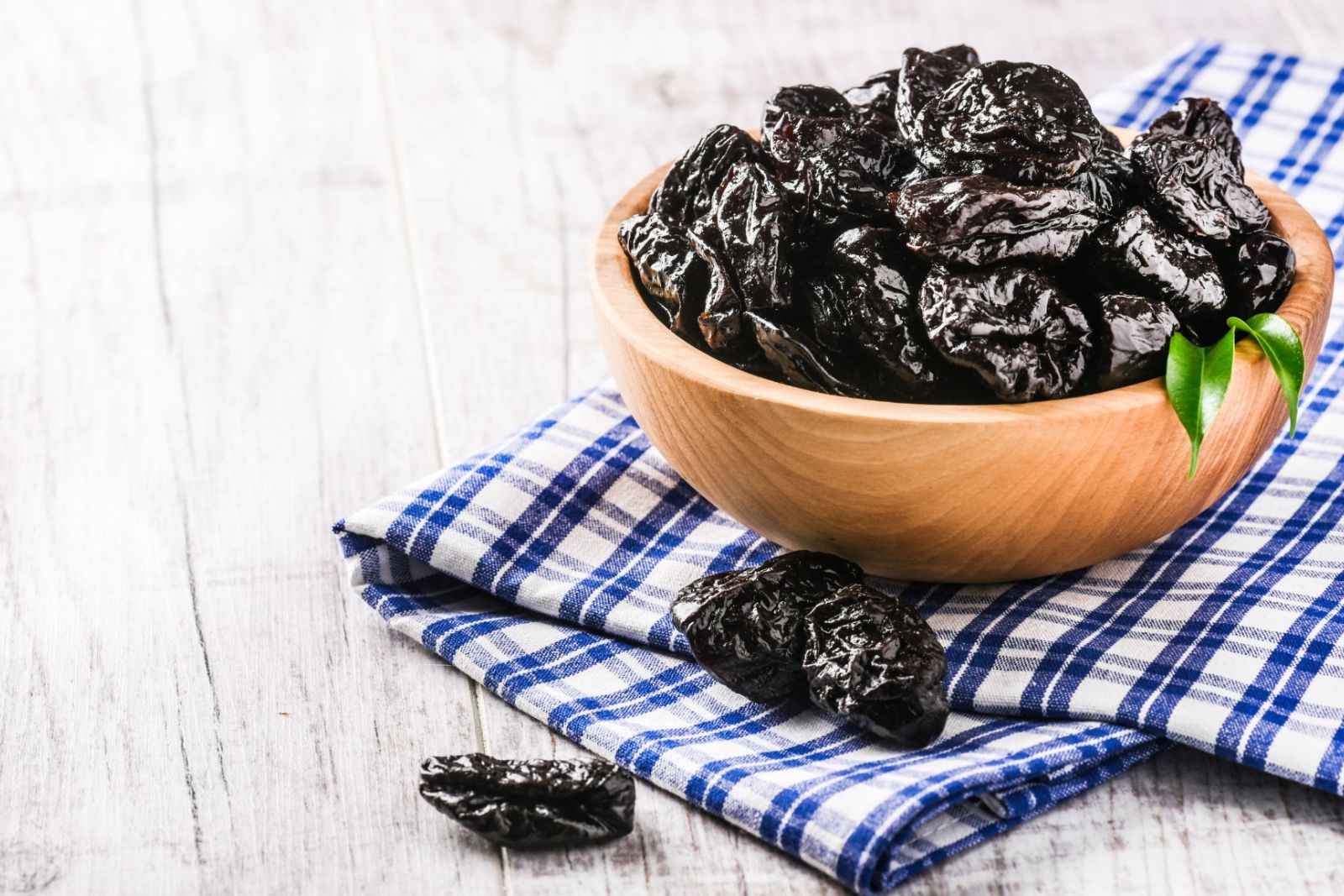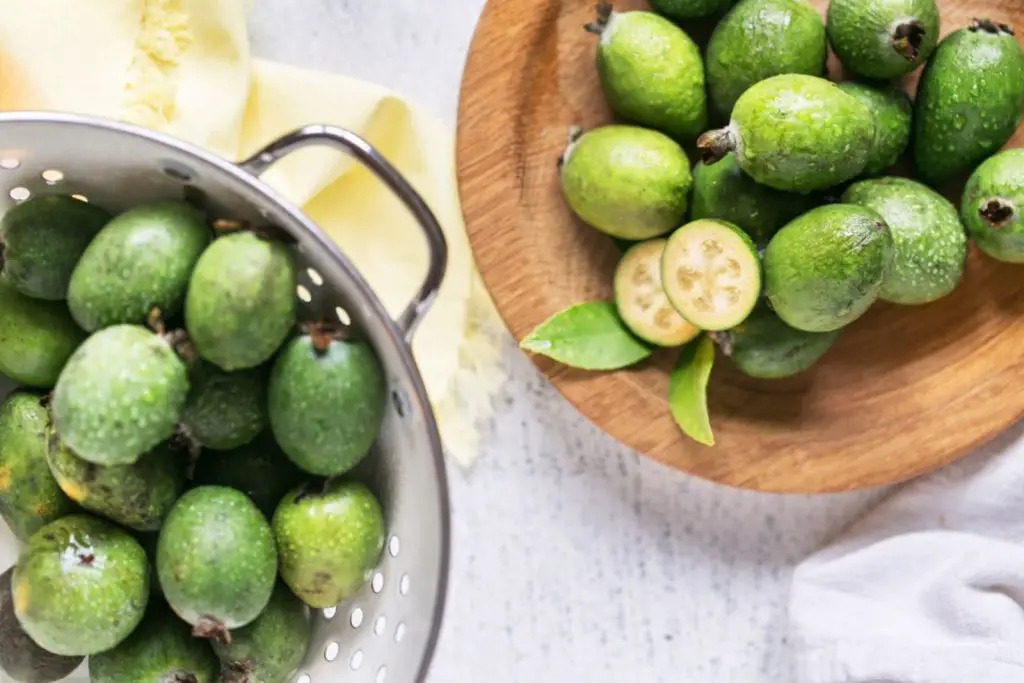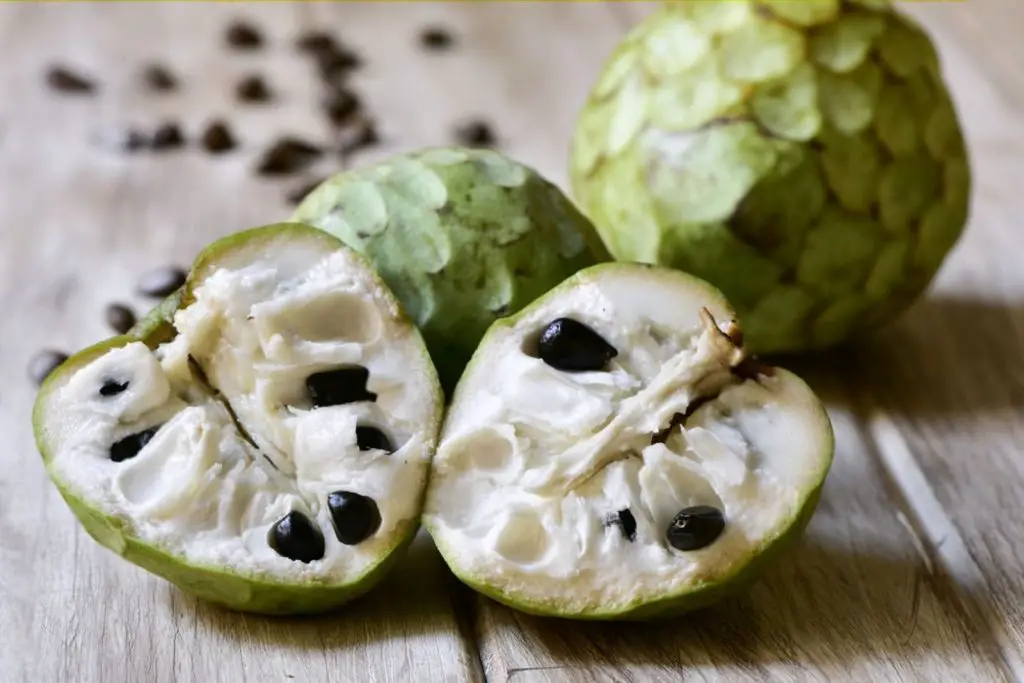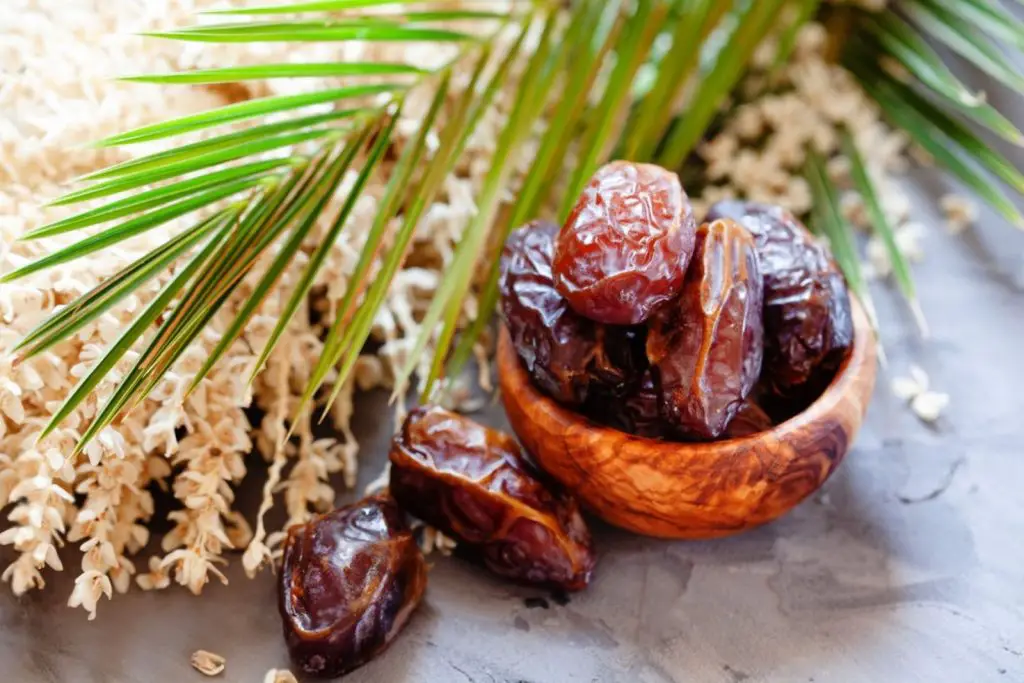
Prunes, also known as dried plums, are delicious and nutritious fruits that are enjoyed for their sweet and tangy flavor. Packed with dietary fiber, vitamins, and minerals, prunes are not only a tasty snack but also offer various health benefits. Freezing prunes is a great way to extend their shelf life and have a ready supply for use in cooking, baking, or snacking. By following these simple steps, you can ensure that your frozen prunes maintain their delightful taste and texture. This article presents a comprehensive guide on how to freeze prunes properly, preserving their quality and flavor for future enjoyment.
Learn the step-by-step process of freezing prunes:
Step 1: Choose high-quality prunes
When embarking on the process of freezing prunes, the initial step involves selecting prunes of the highest quality. The texture and flavor of the frozen prunes largely depend on the condition of the prunes you start with. Opt for prunes that exhibit specific characteristics to ensure the best freezing results.
Prunes that are plump and moist to the touch are ideal candidates for freezing. These characteristics are indicative of prunes that have retained an adequate amount of moisture during the drying process. Plumpness is a good sign that the prunes have not become overly dehydrated, which could result in a tougher texture when frozen.
Equally important is to thoroughly inspect the prunes for any signs of spoilage. Examine them for discoloration, mold, or an off-putting odor. Any prunes that show these signs should be discarded, as they can adversely affect the quality of the entire batch. Choosing prunes that are free from any indications of spoilage ensures that your frozen prunes will not only taste better but also have a longer shelf life.
The rationale behind selecting high-quality prunes is straightforward: prunes with the right moisture content and freshness will freeze more successfully. Their natural sugars and flavors will be preserved during the freezing process, resulting in prunes that maintain their original taste and pleasant chewy texture. By starting with the best prunes available, you lay the foundation for a satisfying and enjoyable frozen fruit that can be used in various culinary endeavors.
Can I freeze prunes with pits?
Freezing prunes with pits is not recommended. Pitted prunes freeze more uniformly and are safer for consumption, as pits can become harder when frozen, potentially causing dental issues or damage to kitchen equipment during processing. Pitting prunes before freezing ensures better texture and ease of use.
Step 2: Wash the prunes (optional)
When it comes to freezing prunes, the question of whether to wash them may arise. Prunes are usually dried during their processing, which significantly reduces their water content and contributes to their long shelf life. As a result, they generally do not require washing before consumption. However, there are scenarios where a gentle rinse might be considered.
While washing prunes isn’t a necessary step, some individuals may choose to do so to eliminate any potential dust or residue that could have accumulated during storage or handling. This might be particularly relevant if the prunes were stored in a bulk bin or an environment where there’s a possibility of surface contaminants.
If you opt to wash the prunes, follow these steps:
- Gentle Rinse: Hold the prunes under cold running water and gently rub them with your fingers to remove any visible particles. Avoid using soap or any cleaning agents, as these can alter the flavor and texture of the prunes.
- Pat Dry: After rinsing, carefully pat the prunes dry with a clean kitchen towel or paper towels. Make sure they are thoroughly dry before proceeding to freeze them. Excess moisture can contribute to freezer burn and affect the quality of the frozen prunes.
It’s important to exercise caution while washing prunes. Since they are already dried, they are more delicate and prone to absorbing moisture than fresh fruits. If not properly dried after rinsing, the prunes could become soggy or develop freezer burn once frozen.
Ultimately, the decision to wash prunes before freezing is a matter of personal preference and consideration of the prunes’ source and storage conditions. If you choose to wash them, ensure that the prunes are dried completely before proceeding with the freezing process. If not, feel confident in knowing that prunes are generally enjoyed without washing due to their dried nature and the preservation methods employed during their processing.
Step 3: Arrange for freezing
As you progress in the journey of freezing prunes, the method by which you arrange them before freezing plays a crucial role in maintaining their quality and ease of use. Depending on your intended usage, you have the flexibility to choose between freezing prunes individually or in conveniently portioned groups. Both approaches have their merits, offering unique benefits tailored to your preferences and culinary needs.
Freezing Individually:
When freezing prunes individually, you are essentially ensuring that each prune remains separate from the others. This approach is particularly useful if you plan to use prunes one at a time, sparingly, or in situations where their individuality matters. To execute this method:
- Use a Baking Sheet: Place a baking sheet or tray on a level surface, ensuring it can fit comfortably in your freezer.
- Spread Prunes Out: Gently place the prunes on the baking sheet, making sure they do not touch each other. This prevents them from freezing in a clump, allowing for easy extraction of individual prunes when needed.
- Freeze: Carefully slide the baking sheet into the freezer, ensuring it’s on a flat surface. Allow the prunes to freeze for a few hours or until they are solid.
Portioned Freezing:
Opting for portioned freezing is suitable when you anticipate using prunes in specific quantities. This method simplifies meal preparation and eliminates the need to separate prunes each time. Here’s how to proceed:
- Divide into Groups: Group prunes into smaller portions based on your anticipated usage. This could be a handful, a cup, or any other portion size that aligns with your recipes.
- Bag or Container: Place each portion of prunes into individual resealable plastic bags or airtight containers. Press out excess air before sealing to minimize freezer burn.
- Label and Freeze: Label each bag or container with the quantity and date of freezing, ensuring you have a clear record of what’s inside.
The reason behind choosing between these methods boils down to practicality and convenience. Freezing prunes individually is perfect for those moments when you require precise portions or want to maintain the prunes’ individual integrity. On the other hand, portioned freezing streamlines your cooking and snacking routines, making it effortless to grab a predetermined amount.
Step 4: Flash-freeze the prunes
The concept of flash-freezing prunes is a crucial technique that guarantees the preservation of their individual form and prevents them from clustering into an inconvenient mass. Flash-freezing is a process where prunes are exposed to extremely low temperatures for a relatively short period, effectively capturing their original texture and minimizing the chances of them sticking together. This step is pivotal in ensuring that your frozen prunes remain easily separable and maintain their distinct attributes even after extended storage.
The Process:
- Baking Sheet Placement: After arranging the prunes on a baking sheet in a single layer, the sheet is positioned in the freezer. The prunes are carefully spread out to prevent any physical contact between them. This separation is key in preventing the prunes from fusing together as they freeze.
- Low-Temperature Exposure: Flash-freezing requires a freezer set to a low temperature, usually well below 0°C (32°F). This rapid drop in temperature is instrumental in creating small ice crystals within the prunes. These ice crystals form quickly due to the low temperature, preventing the formation of large ice structures that could alter the texture of the prunes.
- Duration of Freezing: The prunes are left in the freezer for a relatively short duration, usually a couple of hours. This is enough time for the ice crystals to form within the prunes without allowing them to become fully frozen. The prunes should be frozen until they are solid but not overly hard.
Why Flash-Freeze?
Flash-freezing is especially beneficial for prunes because their natural moisture content can make them susceptible to sticking together when frozen as a solid mass. By subjecting them to a short burst of intense cold, the individual prunes freeze quickly. This rapid freezing process helps to maintain their shape, texture, and flavor by preventing the formation of large ice crystals that could cause cell damage.
Furthermore, frozen prunes that have undergone flash-freezing are much easier to work with. When it’s time to use them, you can retrieve just the desired amount without having to deal with a solid block of prunes. This convenience is particularly valuable if you are incorporating the prunes into recipes or want to enjoy them as a snack without the hassle of separating them.
Step 5: Package the prunes
After successfully flash-freezing the prunes, the next crucial step involves carefully packaging them to ensure their preservation and quality over time. Proper packaging is essential in shielding the prunes from exposure to air and moisture, both of which can lead to undesirable effects like freezer burn or changes in texture. To secure the best outcomes, it’s important to choose appropriate storage options and employ techniques that maintain the integrity of the prunes.
Selecting Packaging Materials:
When packaging frozen prunes, opt for materials that are designed for freezer storage. Airtight freezer-safe containers and resealable plastic bags are commonly used choices. These materials effectively prevent air from entering, which is essential for keeping the prunes fresh and free from freezer burn.
The Process:
- Transfer to Containers: Gently transfer the flash-frozen prunes into the chosen airtight containers or resealable plastic bags. Distribute them evenly and avoid overcrowding, as this can lead to compression and potential damage to the prunes.
- Removing Air: If using resealable plastic bags, carefully press down on the bag to eliminate as much air as possible before sealing. This reduces the chance of freezer burn, which occurs when moisture evaporates from the prunes and condenses on their surface, forming icy crystals.
- Sealing: Ensure that the containers or bags are tightly sealed to create a secure barrier against air and moisture. A proper seal is crucial for maintaining the prunes’ quality during their time in the freezer.
The Importance of Proper Packaging:
Proper packaging serves multiple purposes when freezing prunes. By minimizing air exposure, you effectively reduce the risk of freezer burn, which can negatively impact the texture and flavor of the prunes. Freezer burn occurs when the moisture in the prunes evaporates, and ice crystals form on their surface. This can lead to a dry, unappealing texture and a loss of flavor.
Additionally, suitable packaging prevents the prunes from absorbing any odors or flavors from other items in the freezer. Prunes are naturally porous, and improper packaging could cause them to take on unwanted aromas, potentially affecting their taste.
The effort you put into packaging the prunes correctly directly correlates with the quality of the frozen prunes you’ll enjoy in the future. By choosing freezer-safe materials, eliminating excess air, and ensuring a tight seal, you’re setting the stage for prunes that remain delicious, chewy, and ready to enhance your dishes or satisfy your cravings.
Can I freeze prunes in their packaging?
While possible, it’s recommended to transfer prunes to airtight freezer-safe containers or bags for better preservation. Original packaging might not provide sufficient protection against freezer burn and moisture. Properly sealed containers maintain prunes’ taste and texture during freezing.
Step 6: Label and date
As you near the completion of the process of freezing prunes, it’s essential to incorporate a step that might seem simple but holds immense practical value: labeling and dating the containers or bags. This seemingly minor act serves as a strategic tool for managing your frozen prune supply, maximizing their freshness, and optimizing their consumption. By adhering to this step, you create a well-organized system that ensures you enjoy the prunes at their best quality.
The Importance of Labeling and Dating:
- Freshness Tracking: Over time, it’s easy to lose track of when you froze a particular batch of prunes. By labeling the containers or bags with the freezing date, you’re effectively creating a record of their age. This enables you to assess the freshness of the prunes and prioritize using the oldest ones first.
- Optimal Quality: Prunes, like any other frozen food, have a recommended storage duration. Labeling allows you to identify when the prunes might start to deteriorate in quality. You can then plan to use them in recipes or snacks that might not demand the same level of freshness.
- Efficient Rotation: Rotating your frozen prune supply ensures that you’re always consuming prunes that are at their peak quality. By using the oldest prunes first, you’re reducing the risk of keeping them in the freezer beyond their prime state.
How to Label:
- Write Clearly: Use a permanent marker or labels specifically designed for freezer use. Write the date of freezing in a clear and legible manner.
- Include Quantity: If possible, note the quantity of prunes in the container or bag. This helps you decide which batch to use for specific recipes without needing to open multiple containers.
- Update Regularly: As you use prunes, cross out or update the quantity remaining on the label. This keeps your inventory accurate and prevents confusion.
Step 7: Store in the freezer
As you reach the penultimate step in the process of freezing prunes, you’re now ready to place the meticulously prepared packages into the freezer. This stage is pivotal in ensuring that your efforts to freeze prunes with care and precision translate into prunes that retain their flavor, texture, and overall quality. However, it’s not just about putting the packages inside the freezer – there are a few important considerations that contribute to preserving the prunes’ integrity during their frozen storage.
Here’s how to do:
- Package Placement: Gently place the labeled and dated packages of prunes in the freezer. Make sure to arrange them in a way that allows for proper air circulation around each package.
- Temperature Maintenance: Ensure that your freezer maintains a consistently low temperature, ideally at or below 0°C (32°F). Fluctuations in temperature can negatively impact the quality of the frozen prunes.
- Avoiding Odor Interference: One crucial consideration when storing prunes in the freezer is the potential for them to absorb odors from other foods. Prunes, being naturally porous, can readily absorb surrounding odors, which may affect their taste and aroma. To prevent this:
- Separation: Store prunes away from foods with strong odors, such as garlic, onions, or highly fragrant meats and seafood. Even if the prunes are well-sealed, there’s still a possibility of odors permeating the packaging.
- Air-tight Packaging: Double-check that the containers or bags holding the prunes are truly airtight. This minimizes the chance of external odors infiltrating and affecting the prunes’ taste.
Proper storage in the freezer is the bridge between your careful preparation and the eventual enjoyment of the frozen prunes. By maintaining a consistent low temperature and safeguarding the prunes from odor contamination, you’re ensuring that the prunes remain as delightful and versatile as when you initially froze them.
How long can I store frozen prunes?
Frozen prunes can be stored for 6 to 12 months. Properly packaged and stored at a consistent freezer temperature, they maintain optimal quality. Check for any signs of freezer burn or degradation before use.
Other related questions
How do I defrost prunes?
To defrost prunes, transfer the desired quantity from the freezer to the refrigerator. Allow prunes to thaw slowly overnight or for several hours. Once thawed, they can be enjoyed as a snack or used in recipes.
Can I use frozen prunes directly in recipes?
Certainly, frozen prunes can be used directly in recipes where they will be cooked, such as jams, sauces, and baked goods. No need to thaw beforehand; they soften during cooking. For recipes where texture matters, thaw prunes in the refrigerator before use.
Can I refreeze prunes?
Refreezing prunes is generally not recommended. Once prunes are thawed, their texture and quality can be compromised. Refreezing increases the risk of moisture loss and flavor changes, diminishing their appeal.
How do I know if the prunes have gone bad after being frozen?
Signs of frozen prunes going bad include off-putting odor, changes in color, or an unusual texture, like excessive sogginess or crystallization. Sour or rancid smells indicate spoilage. If any of these signs are present, discard the prunes to ensure safety and quality.
Can I freeze prunes in syrup or juice?
Yes, you can freeze prunes in their natural juices or light syrup. Use freezer-safe containers to prevent leaks or freezer burn. Ensure proper sealing to maintain their taste and texture upon thawing.
Do frozen prunes taste different from fresh ones?
Frozen prunes maintain their flavor and nutritional value, but their texture may slightly change after freezing. The freezing process can alter the cell structure, causing them to be slightly softer upon thawing. However, their natural sweetness and taste remain largely intact, making them suitable for various culinary uses.
Can I use frozen prunes for smoothies?
Yes, frozen prunes are excellent for adding natural sweetness and fiber to smoothies. You can blend them directly from the freezer without thawing. They contribute a delightful taste and nutritional benefits to your smoothie recipes, enhancing both flavor and texture.
Are there any safety concerns with freezing prunes?
Freezing prunes is safe, but proper packaging is essential. Use airtight freezer-safe containers or bags to prevent freezer burn and maintain quality. Ensure the prunes are clean and free from spoilage before freezing. Following recommended storage guidelines minimizes safety concerns and ensures enjoyable frozen prunes.








